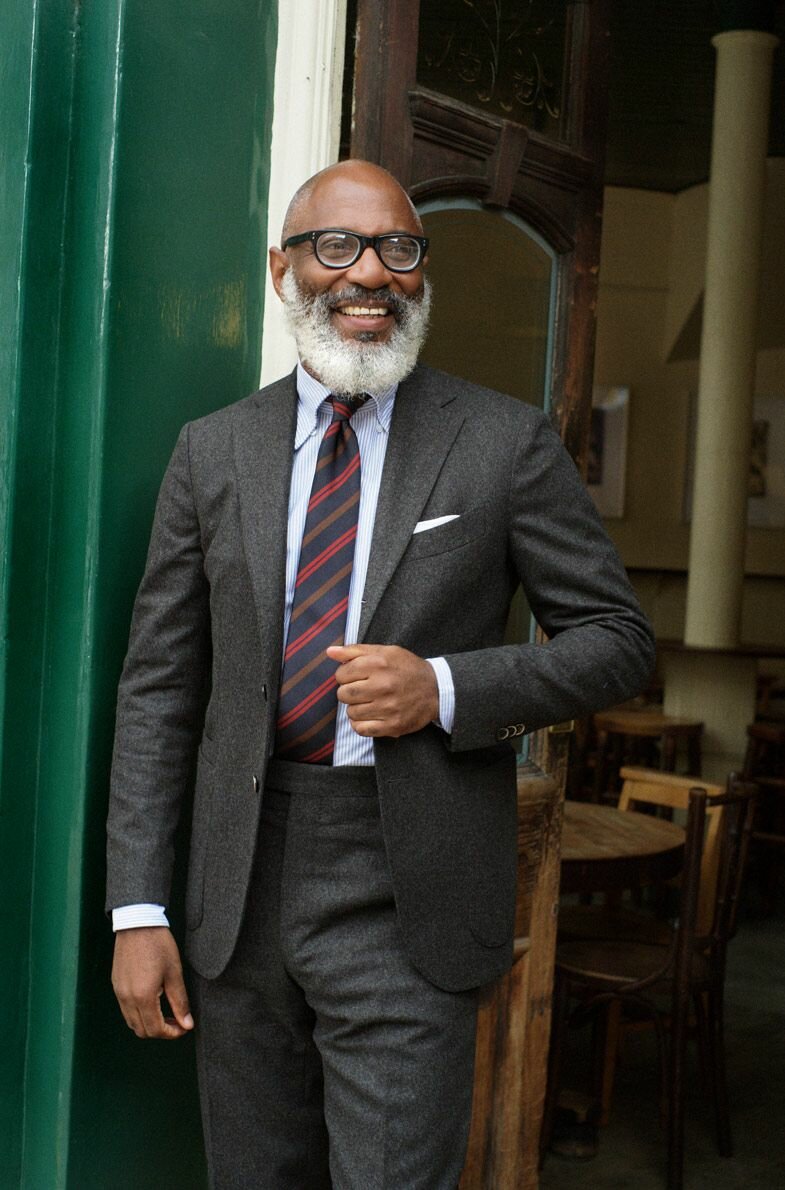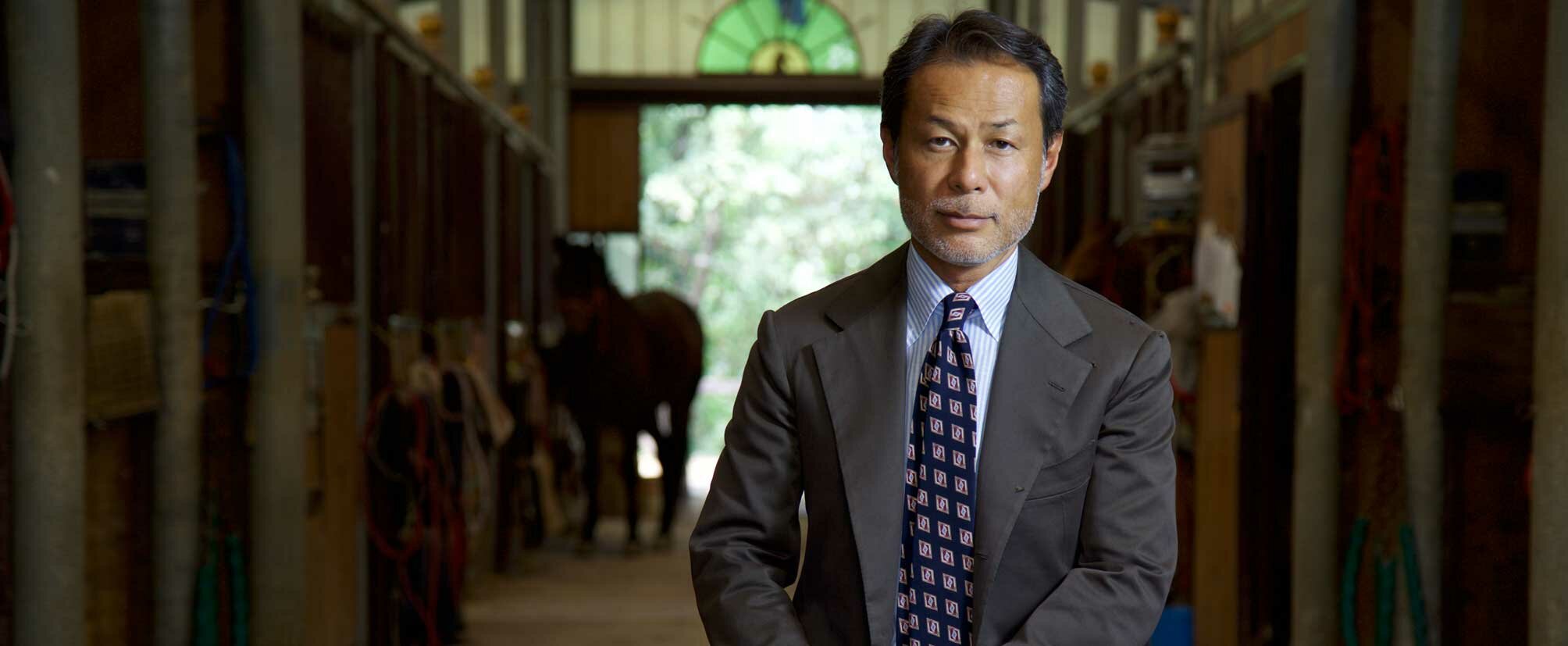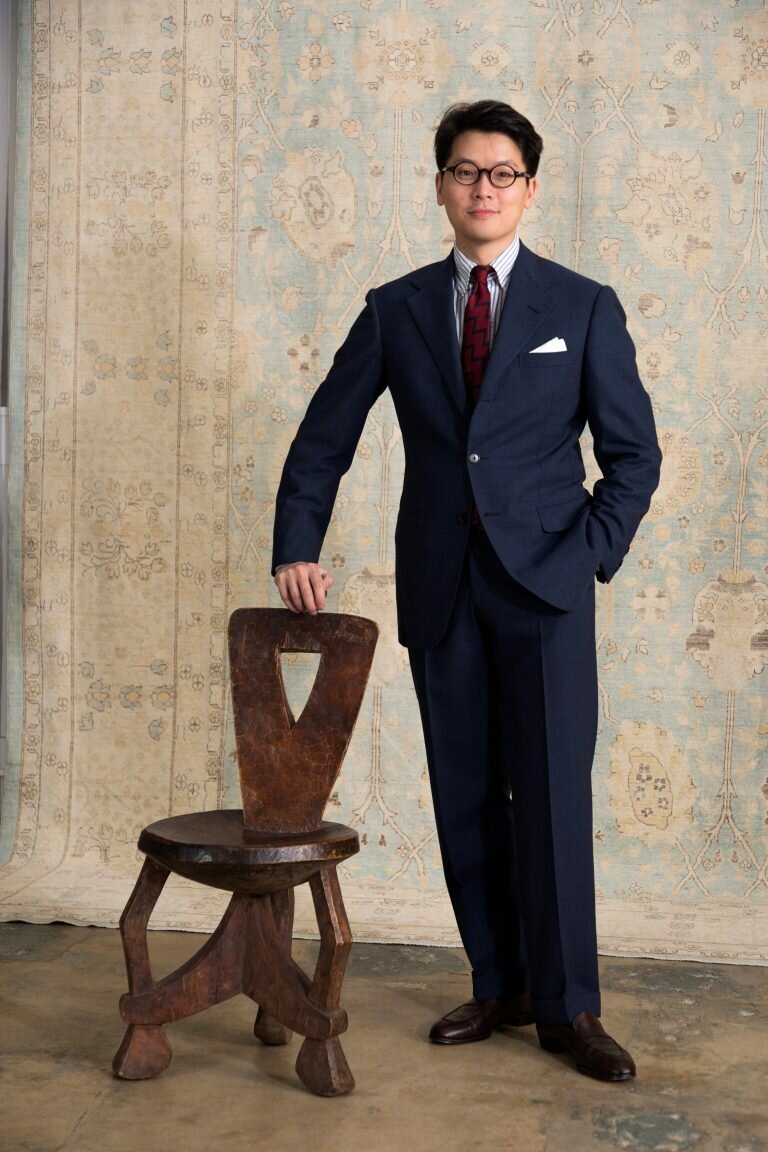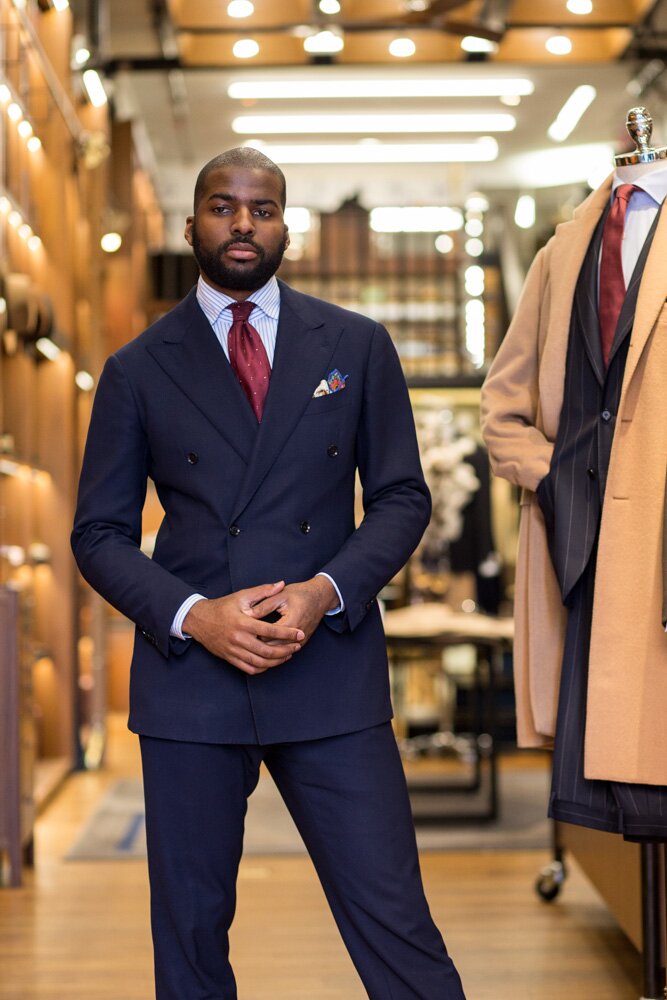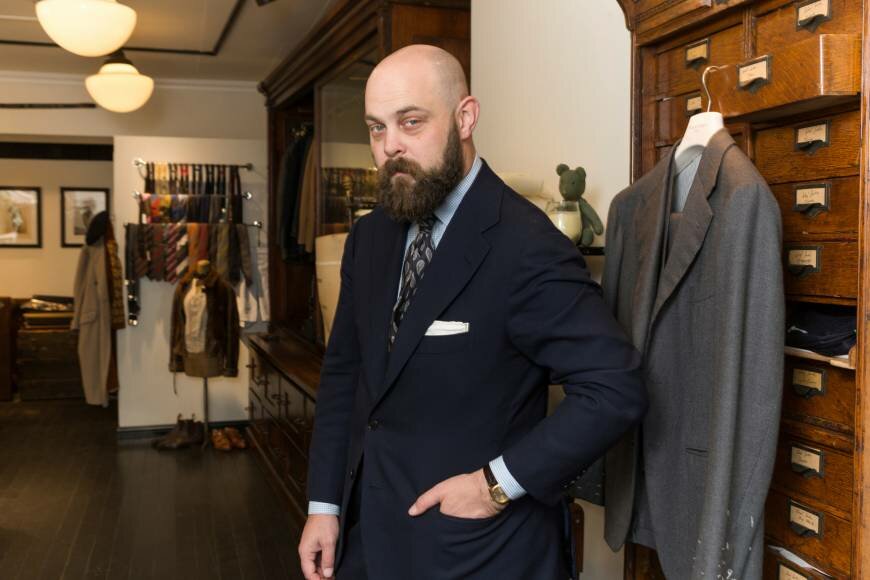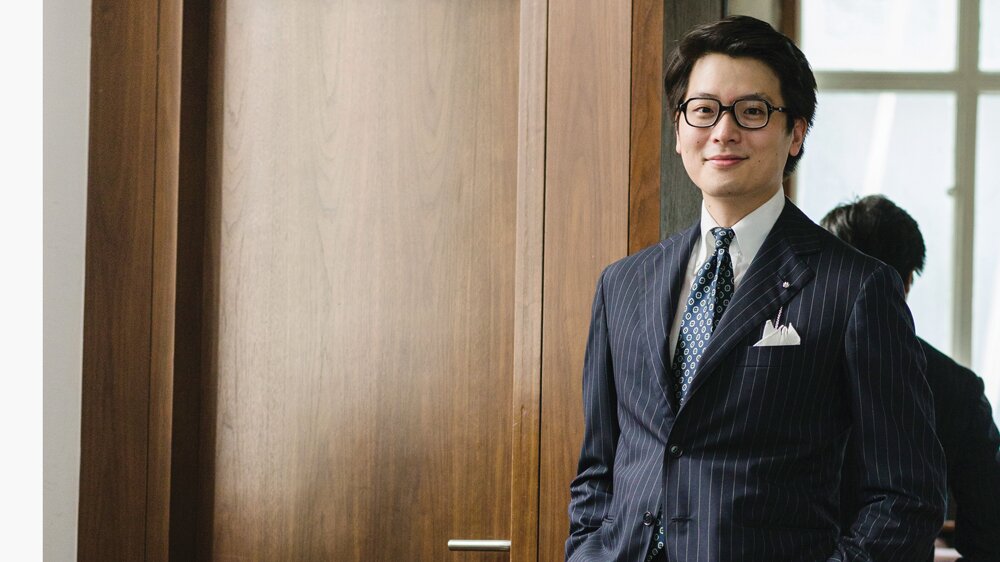The only suits you need for work and why you need them.
As discussed previously, dress codes are important because clothes are a marker of social identity. The way a tie is cocked, the way a lapel rolls, the way a cloth drapes over your shoulders, all of these constitute a rich sartorial syntax. Clothes are non-verbal tools of communication, so why shouldn’t they become an expressive force in your corporate vocabulary?
In my opinion, the best way to start your business wardrobe is with a dark grey, a navy and a striped suit. These three suits are universally appealing; worn by everyone from the business executive to the pimple-faced intern. And just like the ideal employee they are incredibly versatile, respectable and, most importantly, reliable.
Dark Grey Suits For Work
The dark grey suit is the most versatile suit in the business wardrobe.
Because dark grey is essentially a shade and not a colour it acts a neutral backdrop for the rest of your outfit. Bright ties juxtapose nicely with dark grey while dark ones never look too dark. Dark grey isn’t as severe as black, but commands the same amount of authority, which means it can be dressed up or down quite easily. It’s a suit you can wear almost anywhere.
An alternative to dark grey is charcoal, which is equally versatile but much more sober – especially on younger guys. A textured silk tie or off-white shirt can help to alleviate its intensity and so can a light coloured pocket square.
If you’ve never bought a suit before I would recommend buying a dark grey suit in a mid-weight worsted wool first. In winter, my favourite version of the dark grey suit is the classic grey flannel. It is slightly less formal than the regular worsted but it’s warmer and more comfortable.
Navy Suits For Work
Sitting next to dark grey is the classic navy suit which, in my opinion, is far more flattering on most guys.
Like the dark grey, the navy suit is a timeless garment that will take you all the way from the boardroom to the penthouse. Unfortunately sometimes its intensity can overpower the rest of your outfit. You can stop this by picking out a tie with bright highlights or by wearing a light blue or patterned shirt instead of a white one. Continental details like a 3-roll 2 button configuration or a soft Italian shoulder works too. On younger guys especially, they can make a navy suit look classic and contemporary at the same time.
Even though there are a plethora of options on the market, my favourite navy suits are made of twill or plain weave wool. Neither of these weaves call attention to themselves, and as a result, help amplify everything else. Appropriateness is one of the key pillars of business dress, and the navy suit has this in spades.
Striped Suits For Work
The striped suit is the most aggressive suit in the classic business wardrobe.
The power of this iconic suit lies in how it makes people look more dominant and assertive; a result of its vertical lines elongating the wearer’s body.
Besides its forceful appearance, the striped suit is also a great gateway drug into the world of pattern matching. You can pair it with a wide range of neat and medallion ties, and even other stripes too. Wearing a striped suit helps a lot of people break away from the monotony of most business outfits.
Despite its virtues, the striped suit is not as popular in Australia as it is in England or the United States, which I think has something to do with how aggressive it looks. Generally speaking, aggressive stripes are thicker and placed more widely apart. Suits should not overpower the wearer but complement them, so the more aggressive the stripes the more approachable everything else needs to be. A wool or knit tie, or a button-down collared shirt, can help add a touch of humanity to this boardroom staple.
Another secret, and keep this to yourself, is to wear a striped suit so often that you totally forget it’s there. Wear it to work. Wear it after work. Wear it until you know it better than you know your colleagues. In my experience, a good suit is probably more reliable too.
Other Considerations:
Buy the best you can afford
If you can afford them, buy full or half canvassed suits made of pure wool, at least until you have enough suits to organise your business wardrobe seasonally. Canvas refers to a layer of material (usually horsehair) that is inserted between the fabric shell and the lining to help the jacket drape naturally over your body. Cheap suits do away with canvas entirely and replace it with a horrible adhesive called fusing that falls like cardboard. A good suit is like a good education: an investment that opens doors and increases your capacity to appreciate the finer things in life. So spend responsibly on a good suit if you can, and it will pay dividends in the long run.
Pocket Monsters
As a general rule the more elegant a suit, the more formal it is. Due to Australia’s increased interest in casual tailoring, a lot of suits today come with patch hip pockets instead of the more formal flap pockets. Some also have patch chest pockets instead of understated welt pockets. In more relaxed office spaces like Big 4 consulting firms, these might go unnoticed but partners in conservative law and brokerage firms might tell you off. Contrary to popular belief ignorance is not bliss. (Just look at Pauline Hanson).
(Lapel) Size Matters
In menswear nothing changes faster than the widths of jacket lapels. In the early 2000s matchstick thin lapels were the rage and now aircraft-carrier sized ones are in. I feel that big lapels are too aggressive in the workplace and that they should only be adopted by senior executives or young guys with real BDE. So unless you’re one of these (and be honest) it’s safer to stick to a standard width of 8 to 8.5 cm. Guys who work in menswear can rock any size they want; the expectations are different.
Don’t wear too many accessories
As with writing as in business dress, exclamations speak loudest when they’re used sparingly. A watch or bracelet, in addition to a tie or pocket square, is usually more than enough (so put that tie bar down).
On the other hand, don’t wear accessories that are too bland. The suit might be the business wardrobe’s proverbial blank canvas but how many people like looking at blank canvasses?
Stick to the basics
The classic single-breasted, 2-button suit is still the most versatile and conservative suit in the corporate canon. In the office, double-breasted suits demand authority but should generally only be worn by those who actually have it. If you’re still keen on the DB, I suggest you try and make it look more approachable. Give a knit or madder tie a shot, or even a softly constructed jacket. But I think it’s a lot easier to just relax. Trust me, a smile goes a long way.
Go easy on the patterns
Like your Tinder notifications, too many patterns can be distracting. Keep your outfit focused with subtle patterns or just wear less of them. If you only wear solids though your outfit can look seriously bland.
Fit
A suit is meant to be a symbol of social mobility, not a straightjacket. On the other hand, don’t wear a suit that’s too big either, regardless of how expensive or luxurious it might seem on the rack.
Consider your future
What you wear says a lot about who you are and where you want to stand on the corporate ladder. Are you a leader? Are you competent and reliable? Or are you that stressed out employee who will eventually go postal someday?
In my opinion the old adage “dress for the job you want” is inadequate. I think it’s better to dress in line with your immediate superiors. Dress for the next job you want not for the one you’re dreaming about. Nobody likes a junior in a three-piece suit.
Next in this series: The Three Shoes You Need For Work
Or read our previous entry: Is Wearing A Suit At Work Still Important?
And our other primers about tailoring:
- How a suit should fit
- Suit details you should be noticing
- The perfect suit for your body shape
- Suit styling tips for tall and short guys
- How to match patterns
Cover photo via The Armoury


